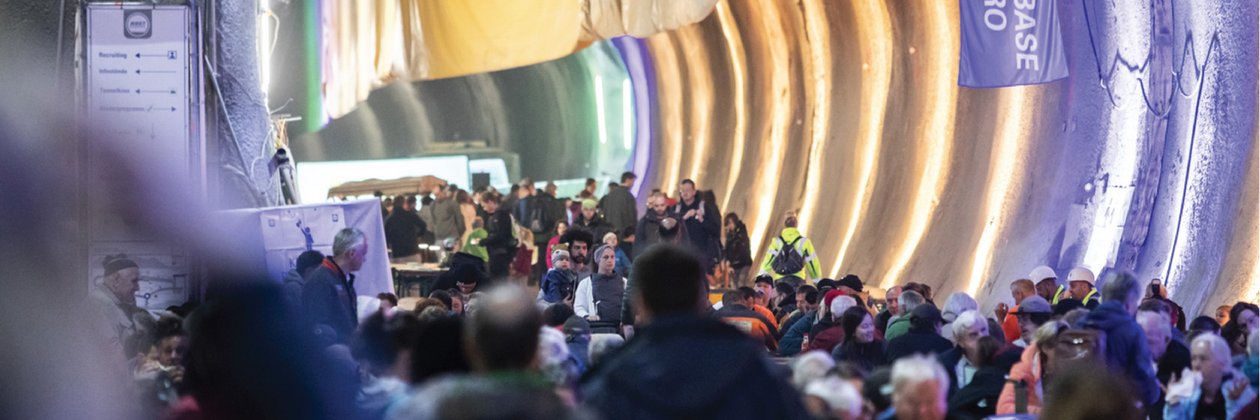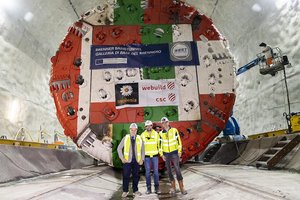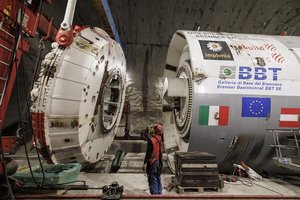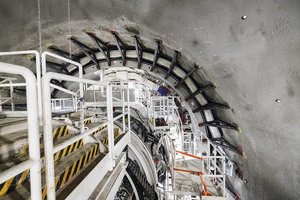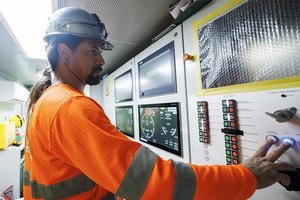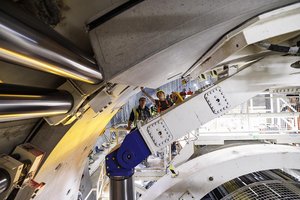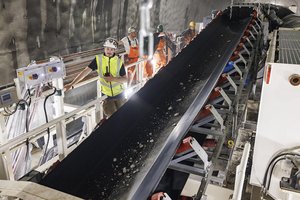On May 2nd 2023, the excavation of the east main tunnel from Ahrental southwards will begin in the H41 Sill Gorge-Pfons construction lot with the start of the tunnel boring machine (TBM) named "Lilia". Starting from the assembly chamber in the Ahrental valley, which is located just under 1,000 metres beneath the surface, the TBM will complete its approximately 8.1-kilometre-long excavation stretch up to the township of Navis. On this day, the first tubbing ring, consisting of six tubbing elements, was also installed.TBM Lilia has a drill diameter of about 10.4 metres and a length of about 160 metres, including the backup structure. The tunnel boring machine weighs around 2,420 tonnes. The assembly on site alone took three months.
The TBM backup - a "moving machine" in the mountain
The TBM backups have a special task: they ensure the supply and control of the TBM.
In addition to working tools and construction materials, the backup units also house personal protective equipment. They also contain the equipment for the installation of the tunnel inner lining (tubbing rings) as well as hydraulic equipment, ventilators, dust collectors and several transformers.
Special rescue containers - equipped with water and first aid tools and supplied with fresh air from the outside - provide refuge for tunnel workers in case of danger. The excavated material is usually transported directly to the disposal sites by conveyor belts. The second tunnel boring machine, named "Ida", which will drive the western main tunnel from Ahrental southwards, will start in mid-June 2023.
Brenner Base Tunnel: Thousands of tubbing rings are produced on-site
The tubbing rings for the "H41 Sill Gorge-Pfons" construction lot are produced in the new, specially constructed plant directly on the existing construction site. In the next 2.5 years, a total of about 51,000 tubbing rings will be produced specifically for this construction lot. On-site tubbing ring production not only offers logistical advantages, but protects the environment as well. Long transport routes are eliminated and the surrounding communities are not burdened by additional construction site traffic. Production on site means that around 27,000 truck journeys to the construction site can be avoided.
